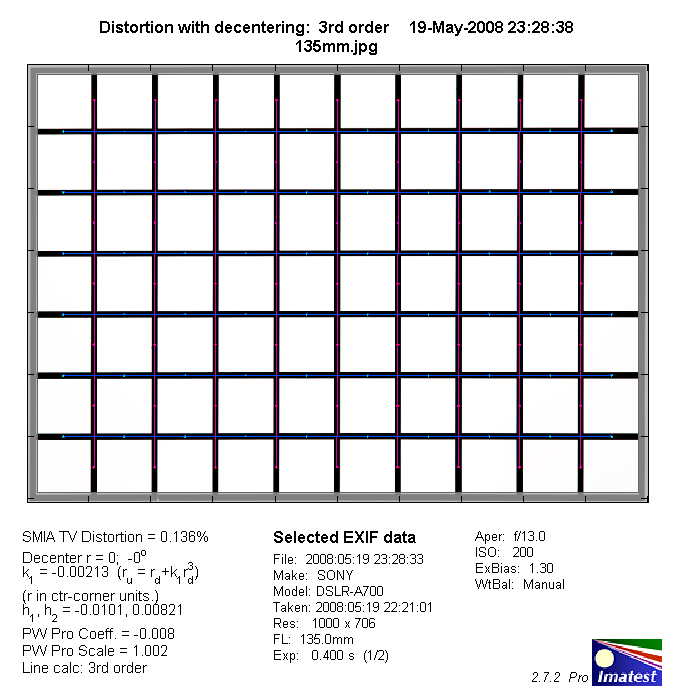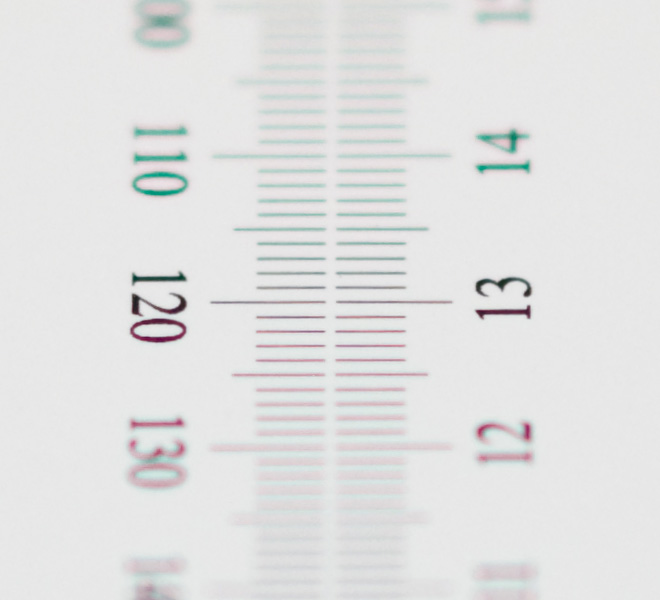|
Zeiss Sonnar T* 135mm f/1.8 ZA ( Sony SAL-135F18Z) - Review / Test Report - Analysis |
|
Lens Reviews -
Sony Alpha/NEX (APS-C)
|
|
Page 2 of 3

Distortion
Typical for fix-focal length lenses in this range there're virtually no significant distortion to worry about (~0.15%).

The chart above has a real-world size of about 120x80cm.
Vignetting
The 135mm f/1.8 is a full format lens and as such enjoying the usual sweet spot advantage
when used on an APS-C DSLR. Within this scope the lens shows a little vignetting at f/1.8 (~0.55EV)
but this isn't really something to worry about in field conditions. The problem is absolutely
negligible by f/2.8.

MTF (resolution)
The Zeiss 135mm f/1.8 ZA produced outstanding resolution figures in the MTF lab. The quality
is already exceptionally high at f/1.8 both in terms of contrast and level of detail.
The center to border resolution is very even across the aperture range. Stopping down lifts
the resolution level a little till peaking around f/4. This is about as good as it gets.
Please note that the MTF results are not directly comparable across the different systems!
Below is a simplified summary of the formal findings. The chart shows line widths per picture height (LW/PH) which can be taken as a measure for sharpness.
If you want to know more about the MTF50 figures you may check out the corresponding Imatest Explanations
Chromatic Aberrations (CAs)
Lateral chromatic aberrations (color shadows at harsh contrast transitions) are exceptionally well controlled
at large aperture settings with an average CA-pixel width (border) between 0.2px @ f/1.8 and 0.5px @ f/8. Generally this is nothing to worry about in field conditions.
The lens is very resistant against purple fringing - even at f/1.8 - see also some of the sample images which were obtained in rather critical situations.

Bokeh
The quality of the bokeh is naturally of major interest for an ultra-large aperture lens and the
Zeiss shows outstanding qualities here again. Out-of-focus highlights show a circular shape from f/1.8 up to about f/2.8. At f/4 the shape deteriorates a marginally. There's no outlining effect. The blur is exceptionally smooth and uniform. However, you may also notice the some longitudinal chromatic aberrations in the cards - more on this in the next chapter.

Longitudinal (Axial) Chromatic Aberrations (LoCA)
LoCAs (non-coinciding focal planes of the various colors), sometimes called "bokeh CAs", can be a visible
in certain situations. This is slightly surprising regarding the 2 large ED elements in the lens design but it's obviously not enough for a true apochromatic correction (=fully color corrected). The problem isn't as pronounced in field conditions as in the 85mm f/1.4 league (across the different brands) though.
|
Move the mouse cursor over the f-stop marks below to observe the respective LoCAs
|
| f/1.8 |
f/2.8 |
f/4 |
|

|
|